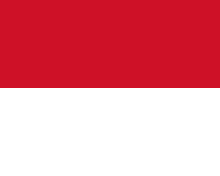Europe Racer
| Europe Racer | |
|---|---|
|
Europe Racer PC cover art | |
| Developer(s) | Davilex Games |
| Publisher(s) |
Infogrames Xplosiv |
| Series | Davilex Racer |
| Platform(s) |
Microsoft Windows PlayStation |
| Release date(s) | September 14, 2001 |
| Genre(s) | Racing |
| Mode(s) | Single-player |
Europe Racer (also known as Europe Racing) is a racing video game developed by Dutch company Davilex. It was first published by Infogrames in the UK on September 14, 2001, later re-published as a budget title by Xplosiv on April 2, 2004.
It is part of the Davilex Racer series, the sequel to London Racer (1999) and the France-only release Paris-Marseille Racing (2000).
Background
The player takes the role of a race driver participating in a championship of cannonball-run style illegal street racing through various cities of Europe. Not only he has to win the championship, but must also evade the police who try to stop racers by blocking them or setting up roadblocks.
The event is organized by Caesar, a now retired racer. The law enforcement teams are led by police chief J. B. Black, driving a black Hummer.
The player can choose from eight teams to compete for, representing eight nations:
 Club USA
Club USA Riders of the Rising Sun
Riders of the Rising Sun Club Moskov Masjina
Club Moskov Masjina Autobahn Raser Club
Autobahn Raser Club London Racer Club
London Racer Club Le bolide Club de France
Le bolide Club de France Motori d'Italia
Motori d'Italia A2 Racer Club
A2 Racer Club
Gameplay
There are three different racing modes:
- Quick race – driving on a single track, with or without opponents
- Championship – a series of five races in a certain category (sportscar, sedan or SUV), with five racers (including the player) competing against each other
- Adventure – a series of twenty races, with five racers (including the player) competing against each other. This is essentially the main story of the game
The player can collect money, nitro and 'repairs' from the track during the races. The money can be used in the latter two racing modes to tune the car.
Cars

The game does not use licensed names of cars (because of the presence of car damage and police chase), but the makes and models are easily identifiable.
Each team (nation) has their set of three unique vehicles: sportscar, sedan and SUV. In addition, the player can unlock a bonus car, so the number of drivable vehicles totals to 25.
There is an array of traffic and police cars on every track as well, models varying from country to country.
The civilian vehicles were also based on real models but they weren't as detailed as the drivable cars. These cars were easy to smash out of the way, meaning players wouldn't have to worry about their obstruction as much as if they were heavily weighted. One part of the Marseilles map made players drive through a car park, this wouldn't be possible if the cars were heavier.
Car listing
Tracks

There are 20 circuits modeled after major European cities showcasing various real-world landmarks, and 2 circuits presenting country landscapes. All of these are populated by traffic and pedestrians. There is no option to set time of day or weather, and there are no multiple roads.
A 21st city, Prague, was only half completed by the release of the game and it does not appear in the game menu. It can be driven on only after manually editing a configuration file.
Track listing
City tracks:
- Amsterdam

- Athens

- Barcelona

- Berlin

- Florence

- Hamburg Harbour

- London

- Madrid

- Marseilles

- Moscow

- Oxford

- Paris

- Rome

- Stockholm

- Vienna

Other tracks:
- Nice
 – Monaco
– Monaco 
- Munich
 – Vienna
– Vienna 
- England Countryside

- French Countryside

All of the tracks had items on the side of the road that could be smashed through, such as signs and bus shelters and market stalls. Some of the designs of these items varied per map and some items only appeared once (such as the large yellow pipe organ next to the canal on the Amsterdam map.) All of the maps included jumps. Usually, at the end of the jump there would be a repair or nitro collectable as a reward. The English tracks were taken straight from Davilex's previous release London Racer. These tracks had some small edits, such as jumps and shortcuts. One part of the English Countryside map was changed from concrete to dirt for a more varied race.
